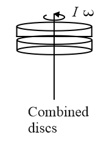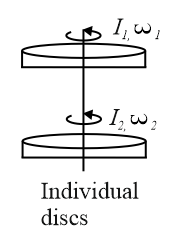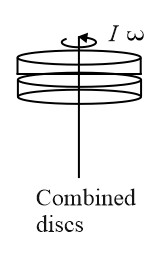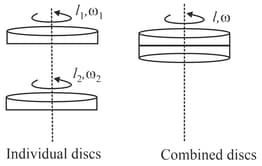B M Sharma Solutions for Chapter: Rigid Body Dynamics II, Exercise 2: DPP 3.2
B M Sharma Physics Solutions for Exercise - B M Sharma Solutions for Chapter: Rigid Body Dynamics II, Exercise 2: DPP 3.2
Attempt the free practice questions on Chapter 3: Rigid Body Dynamics II, Exercise 2: DPP 3.2 with hints and solutions to strengthen your understanding. Chapterwise/Topicwise Daily Practice Problems (DPP) Mechanics - II JEE Main & Advanced solutions are prepared by Experienced Embibe Experts.
Questions from B M Sharma Solutions for Chapter: Rigid Body Dynamics II, Exercise 2: DPP 3.2 with Hints & Solutions
Two discs of the moment of inertias and about their respective axes (normal to the disc and passing through the centre), and rotating with angular speeds and are brought into contact face to face with their axes of the rotation coincident.


Does the law of conservation of angular momentum apply to the situation? Why?
Two discs of the moment of inertia and about their respective axes (normal to the disc and passing through the centre), and rotating with angular speeds and are brought into contact face to face with their axes of rotation coincident.


Find the angular speed of the two-disc system.
Two discs of moment of inertia and about their respective axes (normal to the disc and passing through the centre), and rotating with angular speeds and are brought into contact face to face with their axes of rotation coincident.

Calculate the loss in kinetic energy of the system in the process.
Two discs of the moment of inertias and about their respective axes (normal to the disc and passing through the centre), and rotating with angular speeds and are brought into contact face to face with their axes of rotation coincident.

As a result, the energy of the system decreases. Which force is responsible for this loss in energy?
A particle is moving along a line with a constant velocity. Find the angular momentum of the particle about the origin.
Two men of equal masses stand at opposite ends of the diameter of a turn table disc of a certain mass, moving with a constant angular velocity. The two men make their way to the middle of the turntable at equal rates. In doing so
Choose the correct alternatives.
A smooth tube of certain mass is rotated in a gravity free space and released. The two balls, shown in the figure, move towards the ends of the tube. For the whole system, which of the following quantities are conserved.

